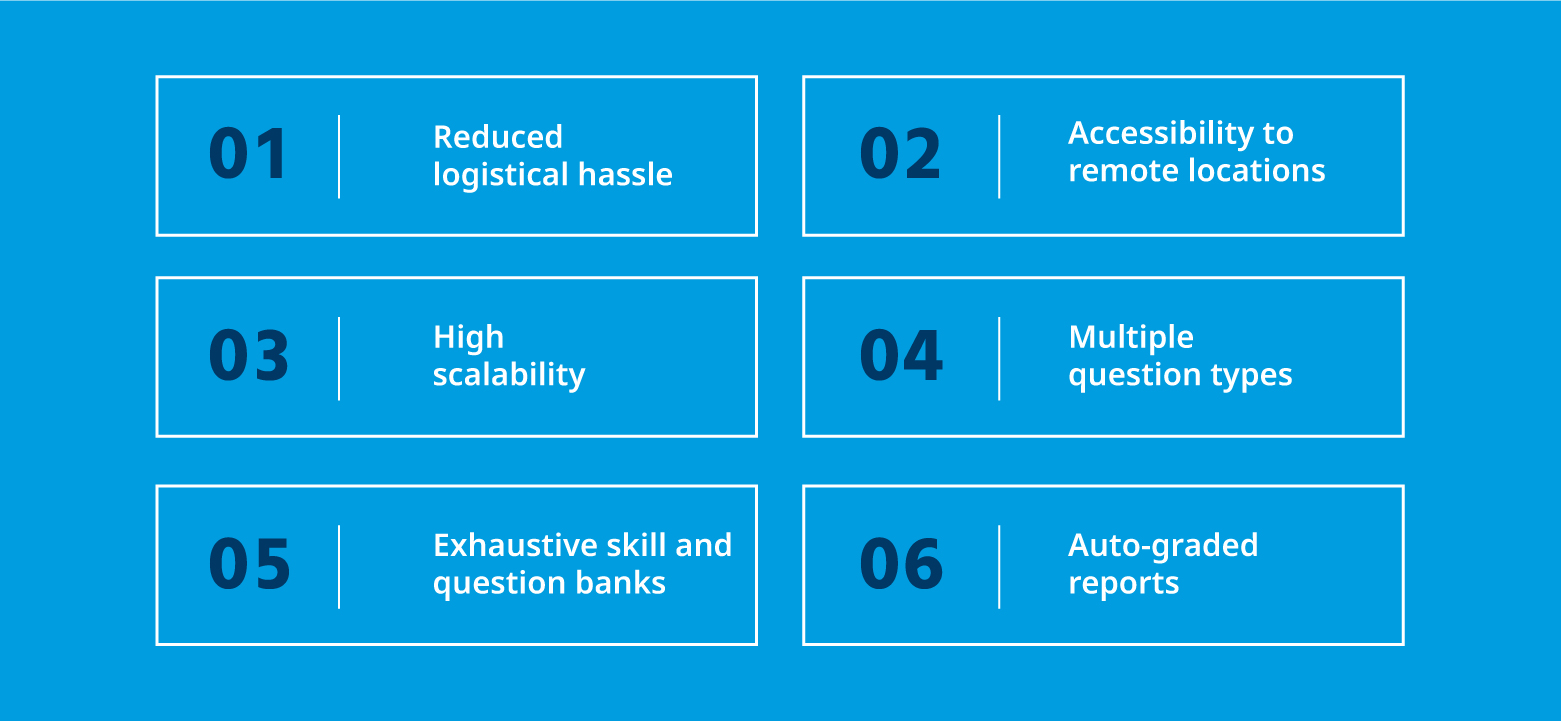Advantages of online tests
Reduced logistical hassle
Online exams overcome the challenge of setting up physical test centers, minimizing resource requirements, such as time, cost of setting up, and the need for human proctors.
Online exams accelerate the admission process in universities, where applications can be screened with minimal resources.
The idea of conducting semester exams and various assessments online lends ease and seamlessness to the entire process.
Improved accessibility
Online exams have broken geographical barriers and enabled wider reach and participation. Global assessment solutions train universities and education sectors, allowing them to conduct assessments efficiently.
Enhanced scalability
Online exams can cater to a broad audience and easily manage vast content. Considering this feature, educational institutions facing a scarcity of time would find it highly convenient to conduct examinations with the least bandwidth wastage. Merely a computer with an active connection and a webcam to take tests makes this possible.
Increased options for question types
Online exams range from MCQs, fill-in-the-blanks, and checkboxes to short answers, long answers, coding simulators, case studies, etc. In addition, online examination platforms support a host of knowledge and application-based questions, enabling examiners to prepare a questionnaire with multiple question types.
Better question banks
Advanced online examination test platforms have an exhaustive library of competencies and sub-competencies, carefully mapped to relevant questions. For ease of use, examiners can choose the relevant skills they wish to test via the exam to frame the questionnaire. This saves examiners’ time and effort.
Auto-graded reports
Automated reports do away with human intervention and save notable working hours. A report is a comprehensive approach to a candidate’s performance, with a question-wise and section-wise summary of the attempt, time taken, and difficulty level. Detailed reports are also helpful for students seeking career guidance.
Disadvantages of online tests
While the advantages of online examinations are undeniable, it’s essential to recognize the drawbacks before implementing an online examination system to ensure improved efficiency.
Internet dependency
Online examinations are reliant on internet access. A stable internet connection is necessary for seamless examinations, and poor network connectivity can disrupt the process.
Technical challenges
Despite the pervasive role of technology, technical issues can still arise during online exams, such as portal navigation problems and system crashes.
Lack of technical proficiency
Students need to possess adequate technical knowledge to effectively participate in online exams. A lack of technical knowledge can hinder the successful execution of online assessments.










 Behavioral Competencies
Behavioral Competencies Cognitive Competencies
Cognitive Competencies Coding Competencies
Coding Competencies Domain Competencies
Domain Competencies













































